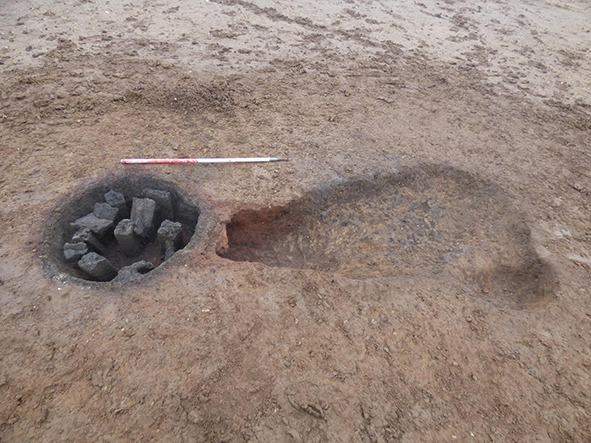Of pots and people: Approaching skill, settlement, and early Roman rural society through pottery-making in the Lower Ouse Valley, Cambridgeshire, UK
Eniko Hudak (PCA) and Adam Sutton (MOLA) will be speaking at this year’s TRAC at Exeter University on 28 April on their research into 40 early Roman (1st and 2nd century) kilns and tonnes of domestic Roman pottery. This nationally significant discovery was made ahead of the A14 Cambridge to Huntingdon improvement scheme, close to Brampton and Godmanchester in Cambridgeshire near the River Great Ouse, where a number of Roman routes converged.



Photos courtesy of MOLA-Headland Infrastructure
A long and highly complex series of technological interactions characterises pottery-making in later Iron Age and early Roman southern Britain. Following the introduction of the potter’s wheel technology was used in diverse and highly socialised ways, becoming entangled with various novel styles of potting, and with other emerging technologies. Conventional narratives of early production sites of the decades after the Roman conquest of AD 43 tended to lean on economic factors and the direct impact of Roman conquest as interpretative frameworks, neglecting the study of social agency. This paper argues that we can do better. The authors will present analysis of the ‘Lower Ouse Valley’ potting complex (Cambridgeshire, UK), characterising pottery-making through typological and archaeometric analyses. We will contextualise the ceramic chaîne opèratoire revealed by these analyses through a study of the structural remains of these first- and second-century AD pottery production sites, which were excavated as part of a single landscape-scale scheme of works. The result, we argue, is a rich understanding of how potting technology and technique continued to change several generations after the initial introduction of wheel technology, and even within communities who enthusiastically engaged with technological novelty. Key outcomes include the revelation of the heterogenous ways in which wheel technology was used even in the production of a ‘standardised’ repertoire; the identification of different forms of technical knowledge, exchanged on multiple scales; and a consideration of how social and economic narratives may be more fruitfully interwoven in the study of ancient technology.

